It’s the time of year for saving money!
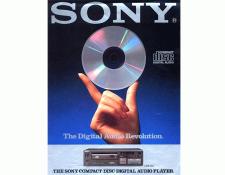 Perfect Sound Forever is what those crazy folks at Sony (and Philips) were selling music lovers back in 1982. And compared to vinyl, the Compact Disc was quite revolutionary. Despite vinyl’s recent, retro-comeback of sorts, the Compact Disc was/is a far more dynamic, right-sized, durable medium that was worthy of its hype back in the day.
Perfect Sound Forever is what those crazy folks at Sony (and Philips) were selling music lovers back in 1982. And compared to vinyl, the Compact Disc was quite revolutionary. Despite vinyl’s recent, retro-comeback of sorts, the Compact Disc was/is a far more dynamic, right-sized, durable medium that was worthy of its hype back in the day.
I remember vividly as a nine-year-old going with my mom, stepfather, and his friend, Bob Mortensen, to Manhattan for the first time from the far-faraway lands of Philadelphia – about 90 minutes away by car.

Bob and my stepfather both bought tank-like, $1000-plus Denon CD players that had that original VCR-like build quality, meaning that they were built like a brick shit-house and the unit my stepfather bought lasted for decades before finally spinning its last silver disc.
Granted, the sound quality of early compact discs paired with the low-resolution first-generation DACs and their lacking analog output left those players with the sonic subtlety of an angry cat climbing up a loose window screen. Early players aside, though, the topic of this article is about your first Compact Disc.
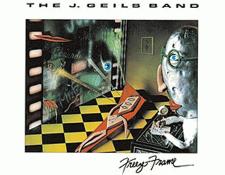 For me, I didn’t have much of a collection of recorded music at nine years old, but my dad did buy me some vinyl, most memorably LPs such as The Rolling Stones’ Tattoo You and J. Giles Band’s Freeze Frame.
For me, I didn’t have much of a collection of recorded music at nine years old, but my dad did buy me some vinyl, most memorably LPs such as The Rolling Stones’ Tattoo You and J. Giles Band’s Freeze Frame.
The first Compact Disc that I bought with a Sam Goody gift certificate (a foolproof gift back then) was The Dead Kennedys’ Fresh Fruit for Rotting Vegetables. As a bit of a Philly skate-punk at the time, the allure of Jello Biafra’s California-punk-political stylings was pretty compelling. In retrospect, I am not sure I could have picked a worse-sounding recording if I tried. Fresh Fruit for Rotting Vegetables could have easily been recorded on a boombox’s internal mic from across a garage.
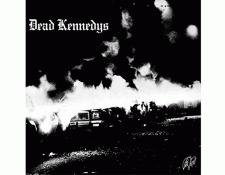 The album had a thin, edgy sound that – along with other cassette tape recordings of skateboard music, such as Agent Orange and Philly’s own The Dead Milkmen – was perhaps appropriate for the genre? I was a good five years away from getting my first real audio system for my fourteenth birthday from my dad (a pair of Polk floor-standing speakers, a Nakamichi music bank CD changer, an NAD 125 watt receiver, and some Monster Cable to boot), so the audio quality on my chosen playback system, a first-generation Sony CD Discman – complete with stock Sony headphones with a bit of a short in the cable near the L-shaped connector – was anything but audiophile quality. But I loved it nonetheless.
The album had a thin, edgy sound that – along with other cassette tape recordings of skateboard music, such as Agent Orange and Philly’s own The Dead Milkmen – was perhaps appropriate for the genre? I was a good five years away from getting my first real audio system for my fourteenth birthday from my dad (a pair of Polk floor-standing speakers, a Nakamichi music bank CD changer, an NAD 125 watt receiver, and some Monster Cable to boot), so the audio quality on my chosen playback system, a first-generation Sony CD Discman – complete with stock Sony headphones with a bit of a short in the cable near the L-shaped connector – was anything but audiophile quality. But I loved it nonetheless.
At the time, my father owned a vacation house in Scottsdale, Arizona, and we would fly out to Phoenix from Philadelphia often, laying over in Dallas because we were somehow loyal to Delta Airlines and that was their hub.
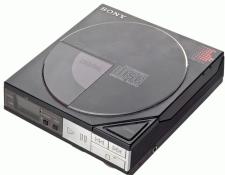
That time-wasting pitstop was quite important back in the day, as I needed to hit my dad up for a fresh pack of eight (yes, eight) AA batteries to power my Sony D-50 portable Compact Disc player. That would be enough to get me from Dallas to Phoenix as the first eight batteries were definitely dead by the time we touched down in Texas. By the time I got to Phoenix (like Isaac Hayes) I could plug in my player into the wall, but this was an era where even in First Class the idea of an AC power adaptor anywhere near a plane seat was pretty well unthinkable.
The impact of the purchase of my first Compact Disc was huge both personally and eventually professionally. I didn’t have a big collection of vinyl to replace like older kids or parents, but boy did I quickly become a junkie for buying music like many of us here at AudiophileReview.com. Tower Records on South Street in Philadelphia was our chosen store for new musical procurement. My childhood best friend’s dad was (and still is) a voracious consumer of classical music and he bought CDs by the dozen at least once per week at the Tower Records Classic Annex just across from the main Tower Records on South Street.
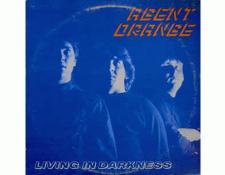
Us kids weren’t as flush with CD-spending money but we would tag along in the old super-square Volvo wagon and head down the “River Drive” to hit up Tower Records and possibly Jim’s Steaks nearby. When we were a little older, many a trip was made to Center City to go music shopping thanks to the local trains that left our native Chestnut Hill to train station at The Galley Mall on Market Street.
Long term, the collection of music that I was amassing was the fuel for what would become the audiophile super-car that I aspired to build. From sixteen years old, I worked in the AV business to fund not just my music habit but to buy audio gear to make my system more and more engaging. In an odd way, my music collection helped keep me from getting a degree from nearby “Trump University” (Penn), thus traveling to a post-Riot 1993 South Central Los Angeles to go to music-business school where I leaned that the music business wasn’t as good of a business as it had been for the past generation.
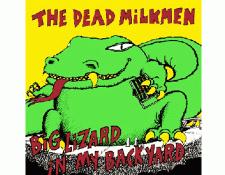
That lesson about what I ultimately didn’t want to do was a powerful one inspired by my love of music and audio. Being away from a more provincial Philadelphia also helped me be in a spot where I could start an audiophile magazine with an $11,000 commission check, a black-and-white Macbook 520B laptop with a 9600 baud dial-up modem, and nowhere close to half a clue as to what I was doing. Nearly a generation later, the rest is history.
But now I want to hear your story. What was your first Compact Disc purchase? Where did you buy it? How did it sound? Did you spend big money on it? How did building a music collection effect your system and your involvement in the hobby? We want to hear from you below.
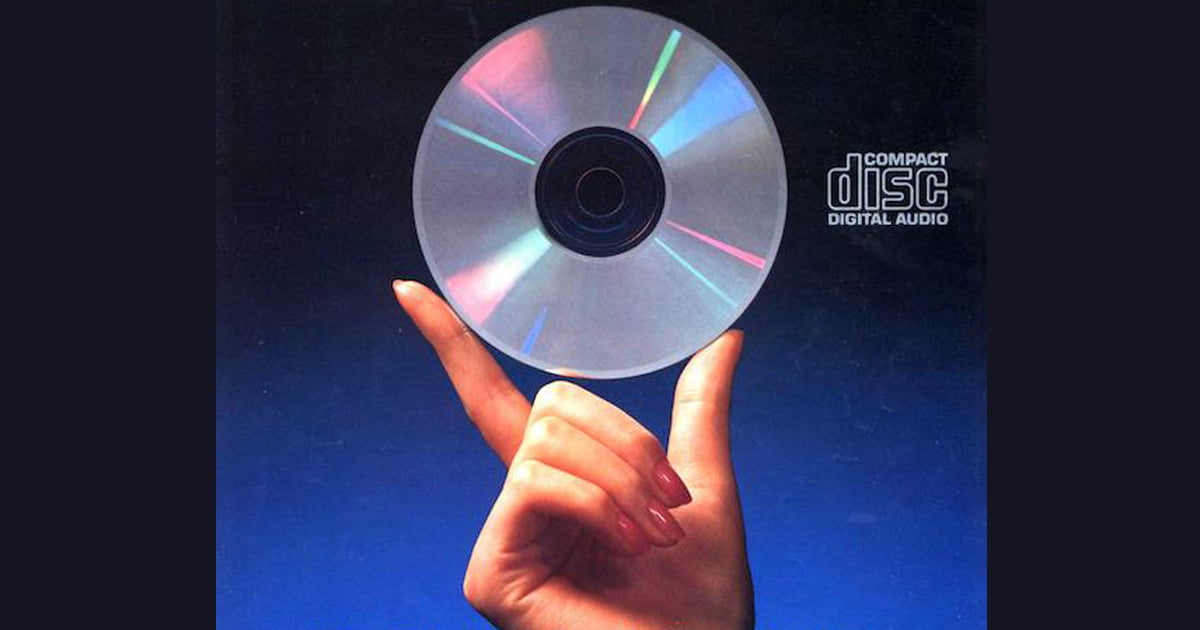
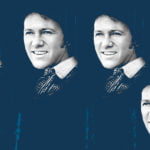







“The Dark Side of the Moon” if I remember correctly. I don’t recall the cost. My CD collection continued to grow over the years to 100+?, then I realized I wasn’t listening to a lot of them and started to sell most of them at a shockingly reduced price 1-2 dollars. Then upgraded my system with an OPPO multiformat player, then started to buy SACDs as I continue to do to this day. The first SACD was “Highway 61 Revisited”. I’ll occasionally buy a Redbook CD sometimes replacing a CD I sold or something I always wanted.
Supertramp – Brother Where You Bound I owned it 2 weeks before my first Akai CD player finally arrived at home and I was Gobsmacked by the sound and still love the album until today 🙂
Billy Joel, The Stranger. It sucked.
I honestly don’t remember my first CD. I just know I thought it was so cool not having to get up and flip over an LP. Plus, no pops and clicks! I do know one of my early CD’s was Jethro Tull, Thick As A Brick. But the first, na, can’t really say for sure.
Pink Floyd “The Wall” was my 1st CD. Vinyl was worn thin and sounded awful. Was blown away by the clarity of the CD version. And now I am actually listening to The Wall on vinyl again. Kinda like it better now 🙂
A Guns N’ Roses import single for “Live and Let Die” that had two non-album B-sides: a live version of the A-side and “Shadow of Your Love,” an Appetite outtake. I didn’t even own a CD player, but since this was several years before the internet and I was a huge G N’ R fan, I didn’t know if I’d ever have another opportunity to buy a copy or hear those songs; it was a “now or never” kind of situation. It was also a first step towards collecting music that couldn’t be found at the local department store in my small Nebraska hometown; all it carried was the top sellers. What I remember about the sound is that when I played it on my friend’s CD player, it sounded so much cleaner than the cassettes I was used to.
Bizet’s Carmen. Migenes, Domingo, Maazel. Complete recording, also used as the film version soundtrack.
First 4 Beatles CDs, Hendrix at Winterland & Zappa/Hot Rats on Rykodisc
My first CD was from JVC in Japan CD-001. The first track was Enrico Caruso and the disc was terrible. I had the first JVC XL-V1 CD player (based on the Hitachi player) Brick wall digital filters made sure the sound was harsh. I worked for JVC at that time and my late friend Bruce Adams had the”Perfect Sound Forever” poster he got from the Sony & Philips press conference with Emil Patrone. I had a Boomtown Rats CD that was also terrible. The Telarc discs were the best sounding I had in the early days. I had mid-fi players in the early days. We all hoped that CD really sounded better. Hank Eisemgrein
Tango in the Night. I was young and foolish but still enjoy as a guilty secret.
We had a library that got on the CD train early and they could afford all the nice classical and jazz discs I couldn’t. I think the first CD I actually owned was Ratt’s Invasion of Your Privacy. Had to have a copy of the song ‘Lay It Down’, it was great, you could crank it up and no temperamental tone arms, no funky tape problems. It sounded good and it just worked. From there it was a slippery slope,Anthrax, Rush and Shostakovich and so on… 🙂
I can’t remember my first CD, but I remember my first CD player — a Denon DCD-1500, favorably reviewed by JGH in Stereophile. It was so much worse than my modest analog front end (AR ES-1, Shure V15-VMR) that I thought it was defective, and Denon agreed to replace it with another. The replacement sounded the same. I collected a bunch of Telarc CDs, which on the players of the time were among the best sounding. I think Inbal’s Mahler 1 (on Denon) was also among my first discs.
What changed my world in a positive way was pitch stability. Piano sounded far more realistic than before. What changed in a negative way was harshness. Violins sounded really aggressive on many recordings.
Digital playback has come a long way since then, thank goodness.
Keith Jarrett’s Köln concert I think was the first, back in ’84. Pretty sure I bought it with my first CD player (a Luxman, that I got from Gramophone Shop in Denver), and paid 15.98 for it. An early taste of jazz improv for me, about a half dozen years later I got around to taking a much bigger taste and still have gobs of jazz CDs to show for it (plus a bit of vinyl for what was not available on CD but just had to have). It sounded pretty darn good to me, as I was pretty fed up with vinyl noise and declining vinyl quality by then, and never looked back. Well maybe a little, with those jazz LPs, but nothing much since.
the first two cd’s i bought were copland’s appalachian spring/billy the kid/rodeo/fanfare for the common man, by bernstein/ny philharmonic; and ‘this is big audio dynamite’, by big audio dynamite. i had just bought a used ’86 mr2 (in ’87), which had the world’s first in-car cd player. so, i wanted to listen to a cd in my car.
it had little impact on me, as i thought cd’s sounded like crap, and i didn’t have one in my home system until the mid 1990’s. and then only because some music i wanted i couldn’t get on that “mostly sucks” vinyl. because, while vinyl may mostly suck, digital mostly sucks even more.
doug s.
As a 15 year old in the early 70’s and fascinated with audio and reproduction gear I bought my first “audiophile” piece of equipment (Phase Linear 400) to go with my Dynaco PAT-4 pre-amp, I was constantly reminded of the shortcomings of vinyl. No matter how careful you were, cleaning, de-staticing (is that a word?), there were invariably pops, clicks and other sounds that took away from the enjoyment of the actual music. I became disillusioned with audio and spent less and less time and money on it’s pursuit (getting my driver’s license and perusing girls also had something to do with it). Then I heard about this new technology……compact discs! I bought the very first one on the market, the Sony CDP-101. Are you ready for this?, I paid $1,000 for it and it was the size of today’s carry on luggage and weighed almost as much. Since no record stores had CD’s yet, Sony thoughtfully let you pick 5 from their catalog so you had something to play on your new machine. The first one I listened to (in my Koss Pro4AA’s, since I couldn’t afford good enough speakers to compliment this new technology) was Billy Joel, but I don’t remember which one. That machine lasted 30 years and had transitioned to duty in my garage when one day I opened the tray to change discs and a rather large, ugly spider came out with the tray. I decided I’d gotten my $1K of listening out of it and it was ceremoniously retired, replaced with one that cost about 1/10th as much, held 100 CD’s and sounded even better. I still listen to CD’s sometimes.
Good memories.
I believe it was Joe Jackson’s Body & Soul, I’d heard the LP, it was an incredible recording, so I thought the CD worth the investment. I bought it at Henry’s Records in St Marys St, Southampton, England (a favorite hang out for listening to new music) and it cost 15 pounds (when LPs cost 3 pounds).
My first CD player was the then brand new Philips front loader. When I moved to Boston in 85 it was tough to find CDs. The Philips player was stolen in a burglary and I replaced it with the Denon DCD 1500, it lasted 13 years of hard use. Around 2000 I replaced the Denon with a NAD player that lasted 10 years. I now use a Panasonic DVD player, that no longer plays DVDs but has great DVD Audio DACs. All my players were researched then purchased based on ‘sound quality’ and an ability to create a ‘live’ believable image.
In 1981 is was in Cambridge, UK on a business trip for meeting with PA Technology. My PA contact and dear friend was Prof. Gordon Edge and at this point my firm and PA had ongoing technology projects where accurately recording and capturing data was a core issue. Gordon had asked the Sony/Philips on site project leader to meet with us and discuss the potential use of compact disc technology in health care applications. After a confidentiality agreement was sign we had a meeting that covered the technology and methods in detail. It was an amazing afternoon. Gordon was a world class audiophile and had the opportunity to use and bless all of Sony’s ultra high-end gear. I too was and still a HiFi nut. We heard prototype discs on prototype players and the experience was technically stunning, the music wasn’t by any stretch good but to opportunities for greatness were absolutely apparent. At one point we had over 900 discs, (now all digitized and donated), today I have maybe 30 discs, mostly for sentimental reasons, and a six disc Onkyo player that would technically crush the 1981 prototype players and discs. The CD changed the music world because it opened the window on lossless technology, storage and playback. The subjective war between the CD and the LP music lovers will never be resolved. But you will never see a LP being used to store clinical or radiology data. I was an immediate CD convert on that November day in Cambridge.
It was Phil Collins’ No Jacket Required. I know, I know. Not very imaginative for such a ‘new audio breakthrough’ choice, but in my defense I was in high school, had no older siblings to influence me, and Mom still had Anne Murray and Roger Whitaker in heavy rotation (lol).
Pink Floyd’s Dark Side of the Moon. No record pops nor ticks, or vinyl wow.
First player was a Sony CDP 101 and disc was Ravel Daphnis & Chloe Montreal Symphony Orchestra Charles Dutoit conducting on Decca (the second was Oxygene by Jean Michel Jarre on Polydor), a revelation in sound. Most people either did not experience buying lp’s pre-CD or have forgotten the “experience” of having to return up to 3 or 4 times to get an acceptable copy of a lp that didn’t jump or was flawed. I have purchased well over 10,000 CD’s in the last 38 years and have only ever had to send 2 back that didn’t play properly.
I am 72 now, so I cannot remember the first Cds I had, but I remember my lovely wife bought me my first CD player when they came out, a Technics that lasted all of about 3 months and quit playing cds. The store could not repair it and so they gave me a 2nd gen player as a replacement. As someone who has recorded most of my life and worked as a broadcast engineer in college and commercially, I can say that going from R2R, cassettes, the famed ElCassette, then DAT, and now computer sound cards starting with the M-Audio flying Cow and Calf., and even their Super Dac; what struck me was the black backgrounds and the level of quiet. Those of us who had to live with a tape noise floor of -55db (Dolby helped for sure), but to get extended frequency response you had to record at -10db or more which pushed us closer to the noise, a very bad thing, and left little dynamic range. Most players and DACs at that time had 12 bit performance at best, but we could see the potential that would take decades to reach. The AD converters used to transfer analogue to digital were not that great, so to expect great sound was kind of misguided. Every improvement in any endeavor must start somewhere, but Sony and Philips were onto something. Now that Dacs are so good, and jitter so low, the new frontier is playback filtering, and now we are finding DAC makers (some) offering playback filter choices to let us choose the type of sound we want. this is not unlike all the choices consumers have in LP playback in choosing the right turntable, cartridge, and phono stage. What is clear that if you chase Perfect Sound Forever, your wallet will be lighter. Speakers are still the weakest link, and our hearing number 2.
I used to fix computers for the industry and i went to fix a computer at Capitol records, after I was done the guy says pick out all the cd’s you want. I didn’t have a cd player yet, they were new, so i grabbed all the beatles on cd and others. Then I went out and bought my first cd player. It was a sony